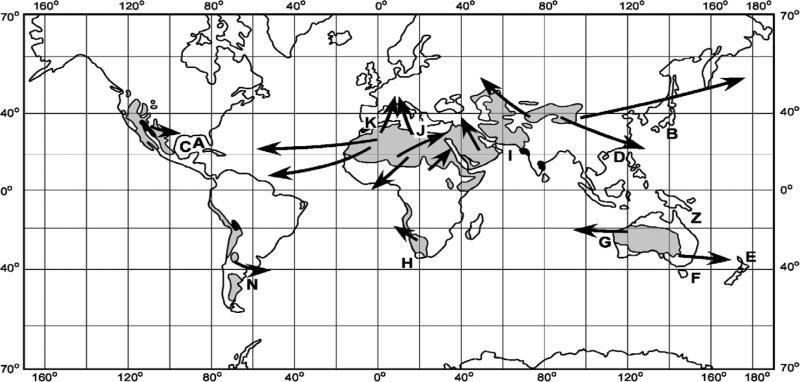Figure 1.
Locations of the Saharan, Saudi Arabian, Gobi, Simpson, Great Western, Kalahari, Atacama, and Patagonian Deserts and their downstream trajectories of aeolian dust [after Meigs, 1953; Pewe, 1981] in relation to red tides of Karenia brevis/mikimotoi off Florida (A) and Japan (B) over the last century, and off Texas (C), Hong Kong (D), New Zealand (E), Tasmania (F), Western Australia (G), South Africa (H), Kuwait (I), Greece (J), and Tunisia (K), over the last decade. The Argentine shelf (N) may have recent undetected red tides of Karenia, since Trichodesmium blooms and dust hazes prevail here, as well, while blooms of Karenia have been found off southern Chile. The Great Barrier Reef (Z) represents the null case of background populations of Trichodesmium, without dust influxes and low residual phosphate stocks, that yield small blooms of other dinoflagellates, instead of red tides of Karenia.

